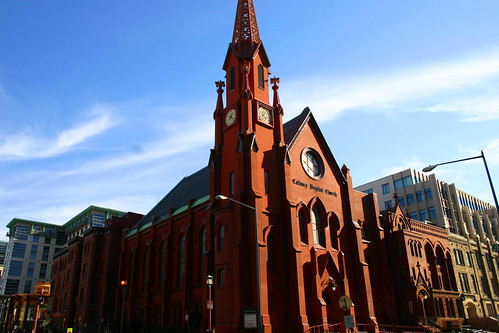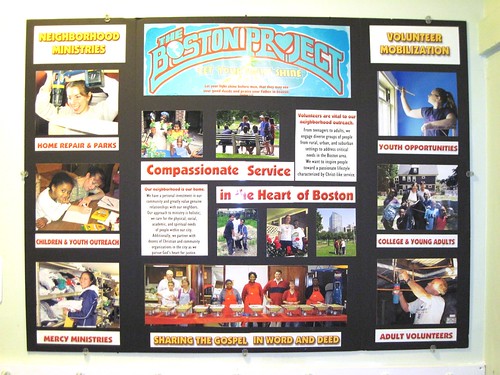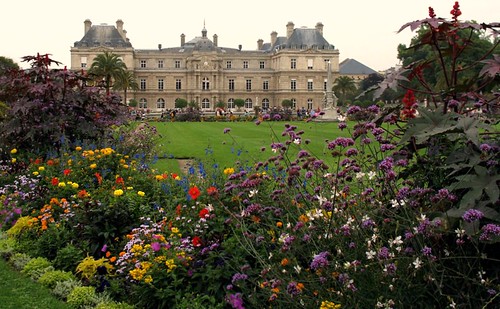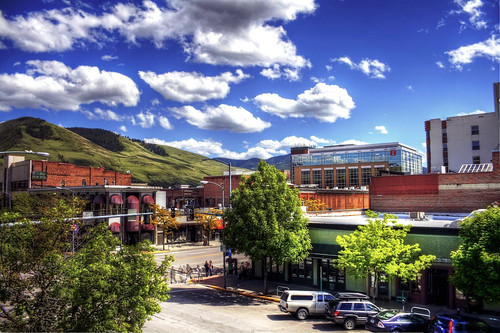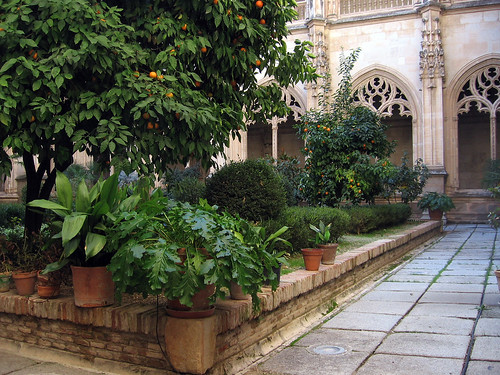The Space Between: caring for cities as an expression of faith

Posted October 12, 2012 at 1:28PM
Eric Jacobsen is senior pastor of First Presbyterian Church in Tacoma, Washington. His new book, The Space Between: A Christian Engagement With the Built Environment, makes a compelling case that members of the Christian faith have a special calling to care for cities, and that the form of cities matters to the success of faithful practice.
The Space Between strikes me as important, in no small part because it comes from a movement not generally (albeit sometimes) associated, at least not today, with discussion of the form and structure of our cities, and thus brings what for many will be an unfamiliar perspective to these issues. (Unfamiliar does not equate to unique: for example, another Presbyterian leader, New York City’s Tim Keller, is eloquent on closely related topics, as is Gresham, Oregon’s Michael Abbaté.) But The Space Between is important also because ours remains a religious country: three-quarters of Americans identify as Christian, even while a growing but still-small minority consider themselves unaffiliated with any particular religion.
Before discussing the book in more detail, I should disclose my own proclivities: As I elaborated in an article last year, I grew up as a Bible-Belt Methodist, and my immersion in that culture had a profound and lasting effect in shaping my values. While I no longer adhere to a particular faith, I remain interested and comfortable in discussions of church teachings, particularly those with regard to ethics. Actually, I’m kind of fascinated by the whole thing; so I knew I wanted to read this book when I saw it.
If I could boil down Jacobsen’s thesis in a few sentences, they would go something like this:
- Faith is not something you have but something you practice.
- The true practice of faith requires personal interaction with people and place that is facilitated by cities.
- The form and shape of cities plays a substantial role in how well one can carry out this mission.
Do cities matter?
The book’s title comes from Jacobsen’s assertion that, when it comes to the physical form of communities, the spaces between the buildings matter as much as, and often more than, the buildings themselves. I agree. (There is also, of course, a Dave Matthews song of the same name, but it doesn’t come up.) He begins by observing that this view is not widely shared among Americans, who increasingly see “community” as about relationships detached from particular geographic places. Indeed, the rise of ever-more-sophisticated communications technology would seem to be reinforcing these beliefs.
In addition, as Jacobsen elaborates later in the book, in the US, cities are up against a deep-rooted anti-urban bias that dates back at least to Thomas Jefferson. Cities and the urban form tend to be neglected even by environmentalists, he asserts, because “green ideology is a rural agrarian ideology.” (He’s increasingly but not entirely wrong about that, in my opinion.) He believes this is mistaken given the relatively smaller environmental footprints of city dwellers, as David Owen’s book Green Metropolis, which Jacobsen quotes at some length, documents.
Jacobsen believes the Holy Bible is on Owen’s side. (In this respect, it is also on my own). He notes that the Bible repeatedly describes humans’ natural habitat and aspiration (though beginning in the Garden of Eden) as in and toward cities:
“In John’s vision of the coming reign of Christ, he is given an evocative picture of our lives when our relationship with God is fully restored. And that picture is not of a garden or a wilderness, but of a city.”
Among many additional biblical references to cities, he later quotes the prophet Zechariah:
“Thus says the LORD of hosts: Old men and old women shall again sit in the streets of Jerusalem, each with staff in hand because of their great age. And the streets of the city shall be full of boys and girls playing in its streets.”
Central to The Space Between is the concept of shalom, which we usually translate simply as “peace” but which he believes contains much more meaning, including restored fellowship, human flourishing, justice, and relational wholeness for everyone. Jacobsen argues that, while each one of us carries a longing for shalom deep within, much of our recently built human settlement “bears not the slightest hint of that blessed condition that is described in the Bible.”
One of the ways in which we fail to move closer to shalom, he continues, is that today we experience our world not with our bodies and senses at human speeds, as Jacobsen believes God intended, but through automobiles and a world designed almost wholly to accommodate them. He cites several biblical passages that suggest something quite different, that walking is central to observant living.
(It is right around this point, by the way - at 9 percent through the text in the Kindle edition - that Jacobsen reveals that he is every bit as much of a planning nerd as any of us, writing about the effect of curb radii on walkability. Later we find discussions of street connectivity, explicitly expressed as intersections per square mile, “the public realm,” and so on. Where was he when we were writing LEED-ND standards? Jacobsen explains all these concepts quite well to regular folks, by the way, but these revelations suggest that his expressed disapproval of urban planners -- whom he blames for much of sprawl -- may not be as fervent as he says. And I should be clear that I mean that in an amused, not a critical, way.)
A theology of place and beauty
One of the chapters of The Space Between is titled “A Theology of Place” and, in it, he asserts that “place is an extremely important concept in the Bible,” and that “enacted place” (the planning nerd again), or public spaces that draw people to animate them, may be especially significant to the Christian community, because people of faith are called to participate in public life as witnesses and ambassadors. Gathered worship is an important exercise of faithful life, but we should also think of our religious expression as extending out into the public realm.
I thought his discussion of the relationship of memory to place, the importance of loving place, and the importance of beauty to religious life was particularly engaging. The importance of memory and legacy to our built environment and to sustainability is something that interests me deeply, and both I and my writer/photographer friend Chuck Wolfe have returned to it often. Here’s Jacobsen on the concept:
“[T]he church in which I was baptized still stands today as a symbolic witness to God’s presence in the neighborhood. The building has aged well and communicates that my baptism was more than a spontaneous accident of history.”
As for the importance of loving place, he quotes G.K. Chesterton on the point that the city of Rome did not become loved because it was great but, rather, that it became great because it was loved. I think I am with Jacobsen on this. While lovability of place remains an elusive concept, it’s another subject to which I have returned often because I think it is important. (I have learned much from my friend and built environment sage Steve Mouzon on this point.)
The Space Between also has a chapter on “A Theology of Beauty,” where Jacobsen notes that the New Revised Standard Version of the Bible mentions “beauty” or “beautiful” a combined 90 different times. I have to admit that I was shocked to see the famous 16th-century Protestant reformer John Calvin, who even disdained music in his Geneva services and generally is thought of as having been ascetic and severe, quoted at length on the subject:
“Now if we ponder to what end God created food, we shall find that he meant not only to provide for necessity but also for delight and good cheer. Thus the purpose of clothing, apart from necessity, was comeliness and decency. In grasses, trees, and fruits, apart from their various uses, there is beauty of appearance and pleasantness of odor . . . Has the Lord clothed the flowers with the great beauty that greets our eyes, the sweetness of smell that is wafted upon our nostrils, and yet will it be unlawful for our eyes to be affected by that beauty, or our sense of smell by the sweetness of that odor?”
I thought I knew my Protestant history, but I had no idea.
Jacobsen even goes so far as to state that “one of the elements that distinguishes Christianity from some of the major Eastern religions (Buddhism, for instance) is its basic affirmation of sensuous desire.” (That certainly confirms that Jacobsen could not possibly have grown up, as I did, in the church culture of Asheville, North Carolina in the 1960s. And, as for Eastern religions and sensuality, I would gently suggest that the ancient Hindu text Kama Sutra definitely beat anything I learned in my Methodist Youth Fellowship.)
Jacobsen includes an interesting discussion of opposing viewpoints as to whether beauty is objective or subjective (“in the eye of the beholder”). He eventually concludes, as I did here, that the subject is complicated but important to cities, worth striving for.
Physical space and true community
Jacobsen sees -- and this is a quibble I have with the book -- what is good and not good enough about the physical form of cities almost entirely through the lens of new urbanism, crediting the Congress of the New Urbanism (disclosure: I am a longtime member and occasional volunteer) for reviving interest in the built environment. (His previous book even had new urbanism in its title: Sidewalks in the Kingdom: New Urbanism and the Christian Faith.) Prominent new urbanists are quoted throughout the book.
He’s right to a degree, of course: new urbanism and its leaders have clearly been influential in our current thinking about the shape of human settlement, particularly the shape of new development. But so have many other leaders, from the National Trust for Historic Preservation (particularly beginning from the mid-1990s when its charismatic leader, Dick Moe, took the organization from thinking about buildings to thinking about communities), to the framers of important growth management laws in Oregon and Maryland, to important environmental justice thinkers like Bob Bullard, to Harriet Tregoning who founded EPA’s smart growth office, to those of us who founded Smart Growth America, and others too numerous to mention.
In any event, Jacobsen concludes that, while new urbanism does get the physical form right, ultimately even the best architecture and planning, work that gets “the space between” right, still won’t create true community. He contrasts the architectural success but social limitations of the iconic new urbanist development Seaside, in Florida, with the messier but more genuine and organic city of Missoula, where he formerly lived:
“Missoula has the advantage over Seaside of a permanent community of residents who can use whatever urban amenities are available as a loom upon which they can weave the fabric of the community together. And Missoula has the advantage of having, interspersed throughout the city, a number of significant churches with active congregations who help to anchor and give depth to the urban texture . . .
“To understand these inhibitors to and incubators for human community, the New Urbanist movement will have to look beyond its vanguard of architects, builders, and government workers. New Urbanism will have to begin to listen to the voices of teachers, psychologists, and, yes, even pastors if it ever hopes to become more than a market correction and instead be the long-term cultural project to which it aspires.”
Later, Jacobsen expands on the utility of churches to community, and links them again back to memory:
“The church, by setting one day a week apart as sacred time, and by marking the year with its church calendar, can be one of the only places in a neighborhood where time and season have any meaning. The church also, in the midst of a fluid culture, represents a living tradition that goes back much further than just one generation. Even a new church in a new residential area can tie the neighborhood into a tradition that is thousands of years old and can bring much-needed depth and perspective into a community. A local congregation can also provide a witness of permanence and connection among the disparate individuals within a community.”
He much prefers that, if churches are to function well, they be located in a community’s center or at least integrated into their neighborhoods.
Attention to strangers and those less fortunate
Perhaps the most important part of The Space Between asserts that Christianity requires its adherents to be welcoming of strangers. Along with being a planning nerd, Jacobsen may also have a lawyerly streak within him, as he reels off several citations to biblical passages commanding or encouraging kindness to strangers. He believes that our patterns of development are among the things that stand in the way, especially with exclusionary zoning and abandonment of the public realm in newer suburbs, which work against even relationships among familiar neighbors “when everyone enters their homes through the garage door and spends time indoors or in the backyard.” Families with kids tend to mitigate this, Jacobsen allows, but it’s one more set of barriers for everyone else.
So what about those who are less well off? Justice is an important biblical concept, he writes, especially for the poor and most vulnerable members of our society. Jacobsen quotes Isaiah in what appears to be a prophetic (heh) admonition against exclusionary zoning and sprawl:
“Ah, you who join house to house, who add field to field, until there is room for no one but you, and you are left to live alone in the midst of the land!”
As my own writings do, The Space Between struggles with the troubling issues of gentrification and displacement as formerly disinvested city neighborhoods revitalize. Jacobsen makes a critical point when he notes that some of the logic behind the anti-gentrification argument is disturbing in that, extended, it suggests “that we should keep certain neighborhoods dangerous, dirty, and ill maintained” so that property values would not increase and no one of means would choose to live there. He cites some hopeful research that neighborhoods that fail to improve are actually less able to retain long-term residents than those that do. Jacobsen doesn’t pretend to have all the answers, but does offer that it is important to maintain different types of housing -- apartments, townhomes and single-family homes of various sizes and price points -- in a neighborhood in order to achieve a mixed-income outcome.
As you can tell, I liked this book. None of the planning concepts were new to me, but I liked that they were offered in a different context. I certainly don’t think you have to be Christian to enjoy the book, especially given the commonality that Christianity has with other religions. But it will help if you don’t mind quite a few new urbanist references with your consideration of cities and if you have a strong sense of social ethics, as I suspect many of my readers do. I flew through it in a weekend.
The Space Between concludes with a wonderfully titled chapter called “A Geography of Rest.” The idea is that what Jacobsen calls “Sabbath practice” should not be confined to the Sabbath day, and that our human habitats must provide us with “places that invite us to rest and to engage with one other and with the world that surrounds us without demanding that we give something productive in return.” These, he argues, are places of shalom. Cities must provide them, Jacobsen argues, “to provide a tacit reminder of what is important.”
And to that, I say “Amen.”
Related posts:
- Is 'gentrification' always bad for revitalizing neighborhoods? (October 19, 2011)
- Imagining cities as a kid growing up in the Bible Belt (September 28, 2011)
- Seeing cities as the environmental solution, not the problem (August 9, 2011)
- The importance of place to sustainability (July 12, 2011)
- Understanding urbanism, from a Christian theologian (March 29, 2011)
- Faith-based environmentalism: an interview with Michael Abbaté (Part 1) (May 19, 2009)
- Community ain't what it used to be: neighborhood challenges to churches and schools (part 2) (July 3, 2008)
- Community ain't what it used to be: neighborhood challenges to churches and schools (part 1) (July 2, 2008)
Move your cursor over the images for credit information.
Please also visit NRDC’s sustainable communities video channels.
